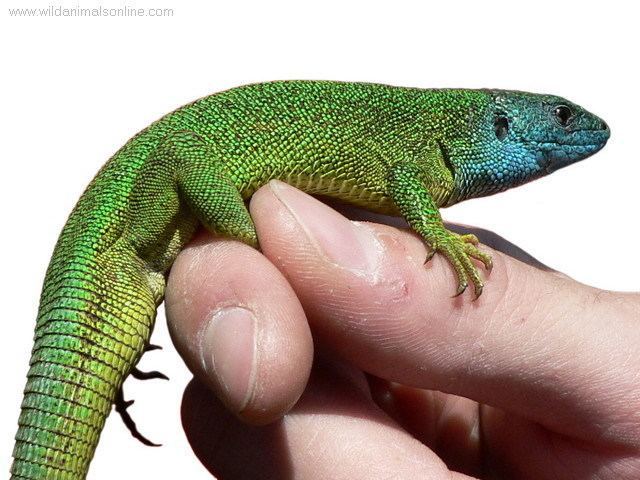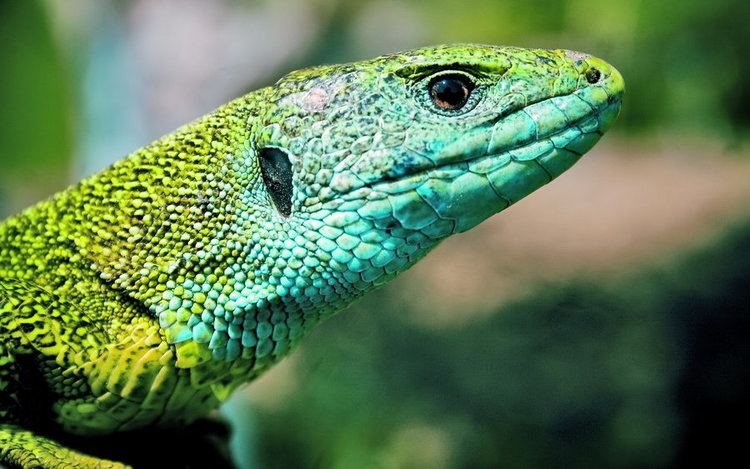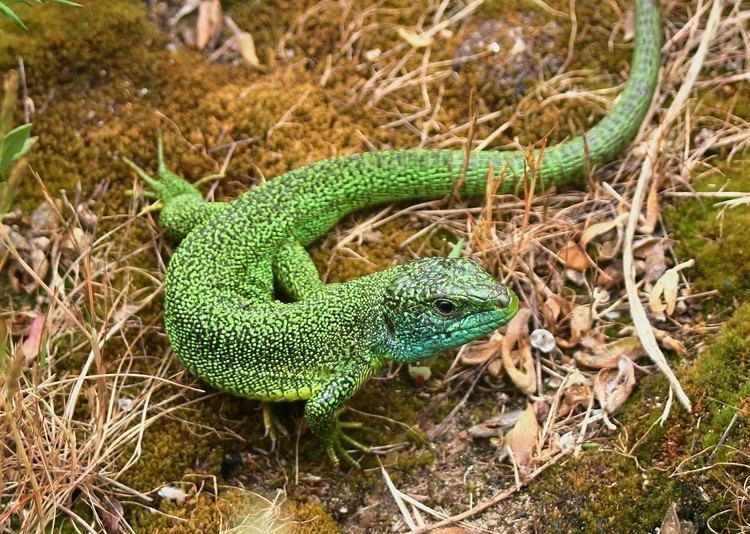Higher classification Lacerta | Phylum Chordata Scientific name Lacerta viridis Rank Species | |
 | ||
Similar Lacerta, Reptile, Western green lizard, Sand lizard, Podarcis muralis | ||
Reptile fun facts 1 european green lizard lacerta viridis
The European green lizard (Lacerta viridis) is a large lizard distributed across European midlatitudes from Slovenia and eastern Austria to as far east as the Black Sea coasts of Ukraine and Turkey. It is often seen sunning on rocks or lawns, or sheltering amongst bushes.
Contents
- Reptile fun facts 1 european green lizard lacerta viridis
- Taxonomy
- Description
- Distribution and habitat
- Behavior
- Status
- References

Taxonomy

There is an ongoing discussion as to whether Lacerta viridis and Lacerta bilineata are separate species. Genetic data weakly supports their separation into two species but more investigation needs to be done.
Description
The lizard reaches up to 15 cm (5.9 in) from the tip of the muzzle to the cloaca. The tail can be up to twice the length of the body, total length is up to 40 cm (16 in). This lizard sometimes sheds its tail (autotomy) to evade the grasp of a predator, regrowing it later.

The male has a larger head and a uniform green coloring punctuated with small spots that are more pronounced upon its back. The throat is bluish in the adult male and to a lesser extent in the female. The female is more slender than the male and has a more uniform coloration, often displaying between two and four light bands bordered by black spots.
Distribution and habitat
The European green lizard is native to southeastern Europe. Its range extends from southern Germany, Austria, eastern Italy, Croatia, Bosnia & Herzegovina, Serbia, Montenegro and Greece to southern Ukraine, Romania, Bulgaria and western Turkey. It has been introduced into the state of Kansas in the United States. It is known from elevations up to 2,200 m (7,218 ft) above sea level and its typical habitat is dense bushy vegetation in open woodland, hedgerows, field margins, embankments and bramble thickets. In the northern part of its range it may be found on bushy heathland and in the southern part it prefers damp locations.
Behavior
The European green lizard lives on the ground and in low, dense vegetation and likes to bask in the sun, early and late in the day. It feeds mainly on insects and other small invertebrates but it also sometimes takes fruit, birds eggs, fledglings, small lizards and even mice. In spring, the female lays six to twenty eggs which hatch in two to four months. Newly hatched juveniles are pale brown with a snout-to-vent length of 3 to 4 cm (1.2 to 1.6 in). They become mature the following year by which time they will have doubled in size.
Status
The IUCN lists the European green lizard as being of "Least Concern". This is because it has a wide range and is common in at least part of that range. It is an adaptable species and no substantial threats have been identified over most of its range. However, in Turkey it may be impacted by the use of pesticides.
